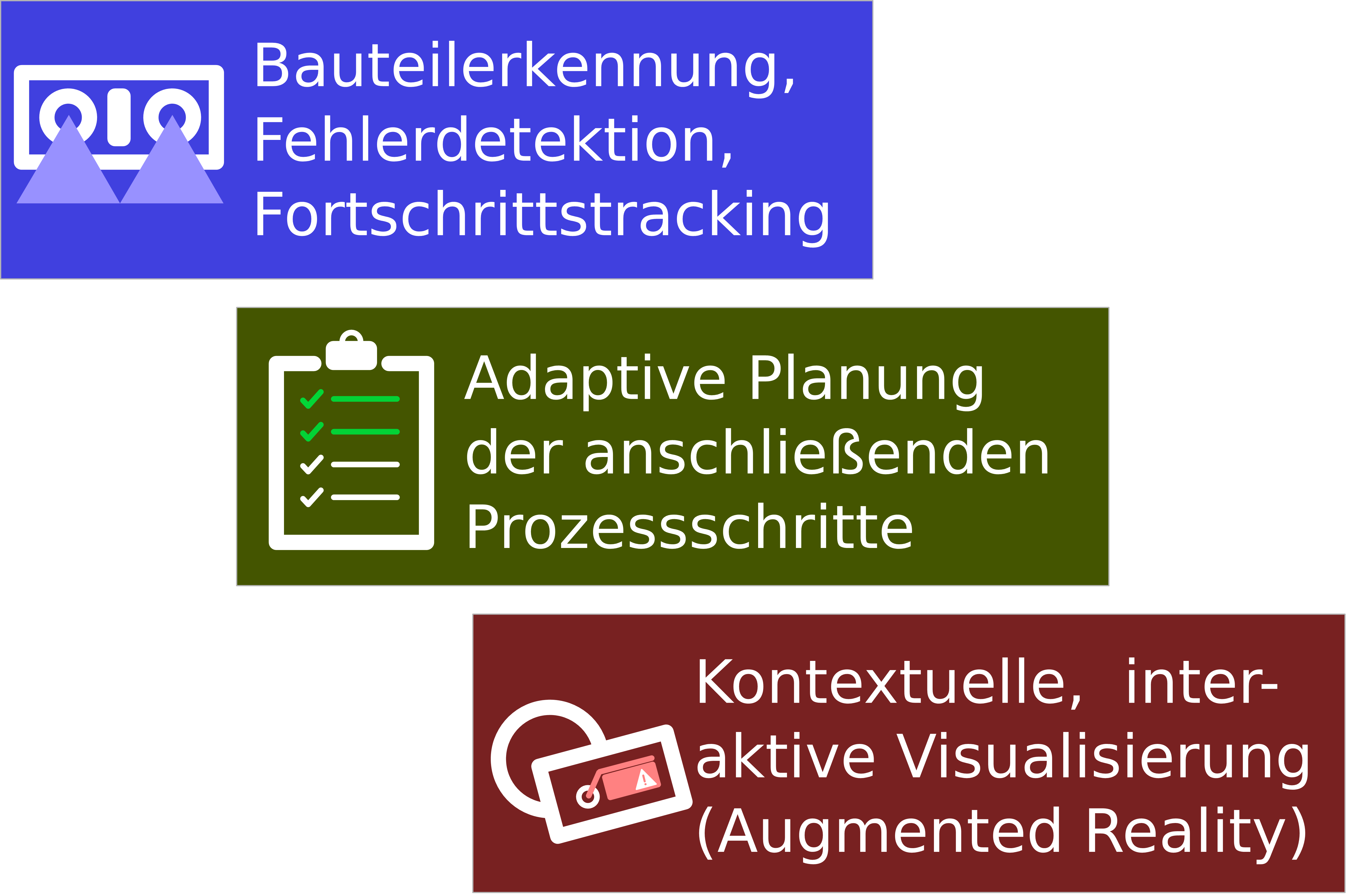SeMoSys
Virtuelle Sektionsmontage und Systeminstallation
The joint project SeMoSys - Section Assembly and Systems aims to combine and largely automate the production of structures and the installation of systems in aircraft manufacturing. The sub-project Virtual Section Assembly deals with sensor and software solutions for digitized, adaptive and predictive manufacturing. The focus is on the "intelligent component", whose condition is continuously detected, tracked and adjusted during production. In this way, it is possible to automatically and systematically record the system status, react to deviations and malfunctions in real time, and thus make production planning adaptive and flexible. Furthermore, the decision-making process is to be made transparent to the plant user in an augmented reality application and interaction possibilities with the intelligent process planning are to be made available.
| Duration: | 01.06.2021 till 31.08.2024 |
| Donee: | German Research Center for Artificial Intelligence GmbH |
| Sponsor: | Federal Ministry for Economic Affairs and Climate Action |
| Grant number: | 20W1922F |
| Partner: |
Premium AEROTEC GmbH Fraunhofer IFAM FFW Aerospace GmbH Diehl Aviation Technische Universität Hamburg FFT Produktionssysteme GmbH |
| Application Field: | Logistics, Production and Consumer |
| Related Projects: |
Hi-Digit Pro 4.0
Flexible High-Lift Wing Assembly with a Digital and Efficient High-Rate Production in the Industry 4.0
(01.2018-
03.2021)
Knowledge4Retail
(01.2020-
12.2022)
|
| Related Robots: |
MARLIN
Mobile Autonomous Robot for IntraLogistics in Retail
OmniPick
|
Project details
To enable high-rate, intelligent manufacturing with a high degree of automation in the future, digital networking of production and the virtual production environment is essential. Existing knowledge about components and process steps can be used to continuously compare virtual and real production. In this way, information about production progress and statements about quality can be generated, but also potential deviations and errors can be detected in good time. This data can in turn be used to plan alternative processes in the event of unforeseen changes or disruptions, so that the flexibility and efficiency of production can be increased. The basis for this is an automated and systematic recording of the current state of production, as well as the linking of real process data with background information. Furthermore, interactive visualizations and augmented reality applications can be used to visualize the system status, make the decision-making process transparent and involve the plant user in it. In this way, production makes use of the enormous potential of digitization.
To achieve the joint objectives, the first step in the Virtual Section Assembly subproject is to develop a sensor-based system for automated, decentralized recording of the system status. The focus here is on the components used in the production process. The information obtained will be linked with metadata from the production process in order to monitor production and detect faults and deviations. The result is an intelligent component whose condition can be tracked and documented throughout the entire production process. AI-based algorithms for process planning can suggest alternative solutions for carrying out process steps in the event of deviations, errors and malfunctions in the manufacturing process. The operator should be shown the current state of manufacturing, the simulation, as well as details for decision-making in an interactive visualization (augmented reality). Furthermore, the operator will be given interaction possibilities to intervene in the decision-making process and to influence the decision-making of the planning algorithms.
In summary, the following scientific-technical goals are pursued in the subproject Virtual Section Assembly
Conceptual design of a sensor system and implementation of an interface for data processing. Development of algorithms for the detection of used components and prediction of errors. Integration of algorithms for adaptive production planning and connection to real sensor data. Development of an augmented reality application to visualize the state of the system and virtual manufacturing.

